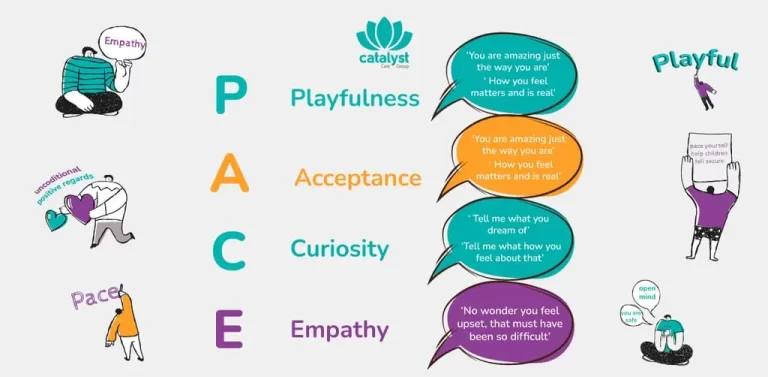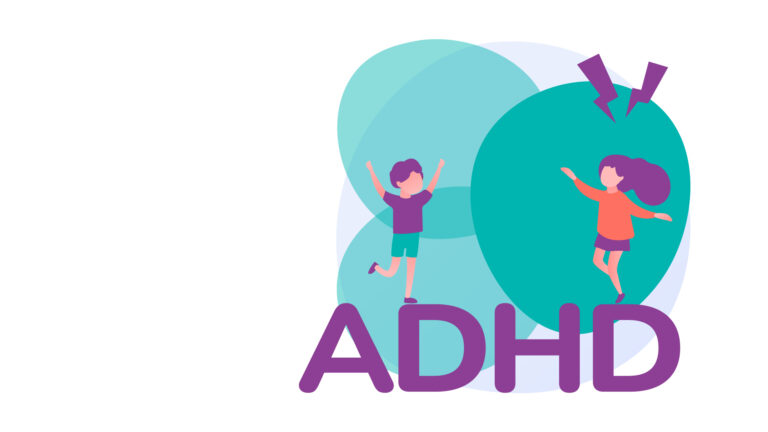Stimming, a term used to describe self-stimulatory behaviour, is often associated with the autism spectrum and neurotypical individuals. It involves different repetitive movements or sounds that a person may perform to express feelings, navigate sensory overload and self-soothe. Below, we explain the unique nature of stimming, its meaning, and its purpose. We also discuss how it’s commonly presented and how it’s perceived and handled in different contexts.
What is Stimming?
Stimming involves using repetitive movements or sounds, including tapping, spinning, hand-flapping, or repeating words and sounds. While it’s commonly associated with autistic people, stimming isn’t exclusive to autism.
Neurotypical individuals also show stimming behaviours, including tapping their feet or twirling hair, particularly when feeling stressed or concentrating.
Stimming Behaviours and Their Purpose
The main purpose of stimming is to regulate sensory input. Autistic people usually have more intense sensory experiences, with cases of hypersensitivity or hyposensitivity to external sensory stimuli.
Stimming serves as a coping mechanism to balance the sensory challenges by counter-stimulating the sensory input. Further, stimming can also have emotional and communicative functions, and serve for navigating overstimulating environments and social interactions.
Stimming can take many forms, including:
- Physical stimming: Including hand-flapping, rocking, pacing, hand-flapping or spinning. These physical movements help to handle sensory overload or soothe in times of anxiety and stress.
- Visual stimming: Including activities like staring at lights, blinking, or lining up objects. These actions provide visual feedback that some people find calming.
- Auditory stimming: Such as repeating sounds, words, or noises, and even listening to the same song repeatedly.
- Tactile stimming: Involving stimming through touch, such as rubbing or scratching surfaces or fidgeting with objects.
- Taste and smell stimming: Including smelling objects or engaging in specific eating behaviours that provide a particular sensory experience.
Stimming Behaviours in Neurodivergent Individuals
Stimming refers to repetitive movements, sounds, or actions individuals engage in to stimulate their senses or regulate their emotions. These behaviours are commonly associated with neurodivergent differences such as autism spectrum disorder (ASD), attention deficit hyperactivity disorder (ADHD), and sensory processing disorder (SPD), among others.
Stimming behaviours, unique to each individual, can vary widely and include actions such as hand-flapping, rocking back and forth, spinning objects, pacing, repeating words or phrases, tapping, or even chewing on objects. While stimming is often misunderstood, it serves important functions for neurodivergent individuals.
Here are some key points about stimming behaviours:
- Sensory Regulation: Many neurodivergent individuals stim to regulate their sensory experiences. Sensory overstimulation or understimulation can be overwhelming, and stimming helps individuals manage these sensory challenges.
- Emotional Regulation: Stimming can help with emotional regulation. It provides a way for individuals to calm themselves when feeling anxious, stressed, or overwhelmed. Stimming behaviors can act as a coping mechanism in difficult situations, offering a sense of control and comfort.
- Self-Expression: Stimming behaviors can be a form of self-expression. They may communicate emotions, needs, or preferences when verbal communication is challenging.
- Respect and Acceptance: It’s crucial to approach stimming with acceptance and understanding. Trying to suppress or eliminate stimming behaviours can be harmful and may lead to increased anxiety or other adverse outcomes. Instead, creating environments accommodating and supporting individuals’ unique needs and preferences is key.
- Individual Variation: Stimming behaviours are highly individualised. What works for one person may not work for another. It’s essential to recognise and respect each person’s preferences and needs regarding stimming.
Overall, understanding and accepting stimming behaviours as a natural part of neurodiversity is essential for promoting inclusion and supporting the well-being of neurodivergent individuals.

Impact of Stimming on Mental Health
The impact of stimming on mental health in neurodivergent individuals can be both positive and negative, depending on various factors such as frequency, context, and individual differences. Here’s a breakdown:
Positive Impact:
- Emotional Regulation: Stimming can serve as a coping mechanism, helping individuals regulate their emotions. It can provide comfort and relief from anxiety, stress, or sensory overload by offering a means of self-soothing.
- Sensory Regulation: Many neurodivergent individuals experience sensory sensitivities or difficulties processing sensory information. Stimming behaviours help regulate sensory experiences, making it easier to navigate and engage with the environment.
- Focus and Attention: Some stimming behaviours, such as fidgeting with objects or tapping, can help individuals maintain focus and attention, especially in situations that require sustained concentration.
Negative Impact:
- Social Stigma: Stimming behaviours may be stigmatised or misunderstood by others, leading to social discomfort, bullying, or exclusion. Negative reactions from peers or caregivers can contribute to feelings of shame or low self-esteem.
- Interference with Daily Activities: In some cases, stimming behaviours may interfere with daily activities or social interactions. For example, if stimming involves disruptive or potentially harmful actions, it can pose challenges in certain settings, such as classrooms or workplaces.
- Limited Activities: Some individuals may engage in limited or repetitive stimming behaviours, which can restrict their ability to explore new activities or interact with their environment in diverse ways.
- Dependency: In rare cases, individuals may become overly dependent on stimming behaviours as a primary means of coping with stress or regulating emotions, potentially hindering the development of alternative coping strategies.
Overall, while stimming behaviours can play a vital role in supporting the mental health and well-being of neurodivergent individuals, it’s essential to address any negative consequences and provide support and understanding.
Encouraging acceptance, promoting inclusive environments, and offering alternative coping strategies can help individuals manage their stimming behaviours in ways that enhance their overall mental health and quality of life.
Links Between Stimming and Anxiety and Depression
The relationship between stimming, anxiety, and depression can be complex and multifaceted, with each influencing the other in various ways. While stimming behaviours can provide temporary relief from anxiety and depression, they may also contribute to social stigma or isolation, exacerbating mental health challenges. Understanding the interplay between stimming and mental health is essential for providing appropriate support and interventions that address the unique needs of neurodivergent individuals.
Stimming and Anxiety:
- Stimming often serves as a coping mechanism for managing anxiety. Repetitive movements or actions can provide sensory input and help individuals regulate their emotions, offering a sense of empowerment, comfort, and control in stressful situations. Anxiety can exacerbate sensory sensitivities or overload, leading to increased stimming behaviours as a way to self-soothe and reduce overwhelm.
- In social situations, an autistic person or neurodivergent individuals may experience heightened anxiety, leading to increased stimming behaviours as a way to cope with social discomfort or sensory overstimulation.
- Stimming behaviours can help distract individuals from intrusive thoughts and provide temporary relief from anxiety-related distress.
Stimming and Depression:
- Stimming behaviours can play a role in managing depressive symptoms by providing a means of emotional regulation and comfort.
- Individuals experiencing depression may exhibit increased stimming behaviours as a way to cope with feelings of sadness.
- Stimming can serve as a form of self-soothing for individuals experiencing depressive symptoms, offering a sense of predictability and control.
- Depression-related social withdrawal and isolation may impact the frequency or intensity of stimming behaviours as individuals seek comfort and stimulation in solitary activities.
Strategies for Health Providers
Health and care providers can support individuals who exhibit stimming by educating themselves and others about stimming behaviours, adopting a person-centred approach, and creating safe and accepting environments. Healthcare professionals have a key role in identifying the signs of stimming and supporting autistic children and adults to build resilience and healthy coping mechanisms to navigate stress and anxiety.
By implementing functional assessments and individual Positive Behaviour Support (PBS) plans, we can assist people in gaining self-awareness, as well as the power to make a positive change in their own lives. With speech and language and occupational therapy teams, we are able to understand, identify and provide humanised support to neurodivergent people, providing the best possible outcomes.
Some of the training we provide includes:
- Autism Awareness Training
- Trauma-Informed Care
- Person-Centred Approach
- PROACT-SCIPr-UK®
- Positive Behaviour Support
Our teams are committed to:
- Creating safe and accepting environments
- Involving family and caregivers
- Collaborating with multidisciplinary teams
By implementing these strategies, health providers can create supportive environments and empower individuals who exhibit stimming behaviours to lead fulfilling lives while respecting their unique neurodiversity.
Incorporating Stimming into Personalised Care Plans
Incorporating stimming into personalised care plans involves recognising its significance for the individual and tailoring support accordingly. This may include:
- Understanding: Gain insight into the individual’s stimming behaviours, including their purposes, triggers, and impact on daily life.
- Communication: Engage in open and respectful dialogue with the individual and their support network, valuing their unique perspectives, preferences, and goals related to stimming. This understanding is crucial in tailoring effective support.
- Accommodation: Create environments that accommodate and support stimming behaviours, such as providing sensory-friendly spaces and allowing for breaks when needed.
- Coping Strategies: Explore and implement coping strategies that help manage stimming behaviours in ways that promote well-being and self-regulation.
- Collaboration: Collaborate with other healthcare professionals, caregivers, and educators to ensure a holistic approach to supporting the individual’s needs.
- Flexibility: Recognise that stimming behaviours may change over time and adapt care plans accordingly to meet evolving needs.
- Empowerment: Actively involve people in their care, empowering them to advocate for themselves and participate in decision-making regarding their care.
Catalyst Care Group Empowers Neurodivergent Individuals
Catalyst Care Group offers a comprehensive team of speech and language therapists, occupational therapists and Positive Behaviour Support therapists within our internal multidisciplinary team. Collaborating with parents, educators, family members, and fellow healthcare providers, our therapists closely evaluate motor skills, sensory processing, emotional regulation, and cognitive abilities to tailor support to each child’s unique needs.
Our therapists work with people in the comfort of their homes, providing person-centred and high-quality support. We also provide support in educational and employment settings, everything the individual needs to reach full potential.
After conducting assessments, we create individualised plans centred around each person, incorporating objectives and approaches aimed at empowering them to make significant life changes. These goals are customised to the specific skills and capabilities of each child or individual, encompassing tasks related to self-care, fine motor skills essential for writing, active participation in school, and integration within the community.
Our therapists also work with autistic adults, children, and their families to develop and practice these skills at home or school to participate in daily activities.
We provide 24/7 tailored support, ready to act on call and in crisis situations. Our goal is to prevent unnecessary hospital admissions and out-of-area placements.
Take a moment to check our real-life stories and see the life-changing impact of person-centred support.
Contact us today to find an urgent and consistent support team that is flexible and adaptable to any challenge!













